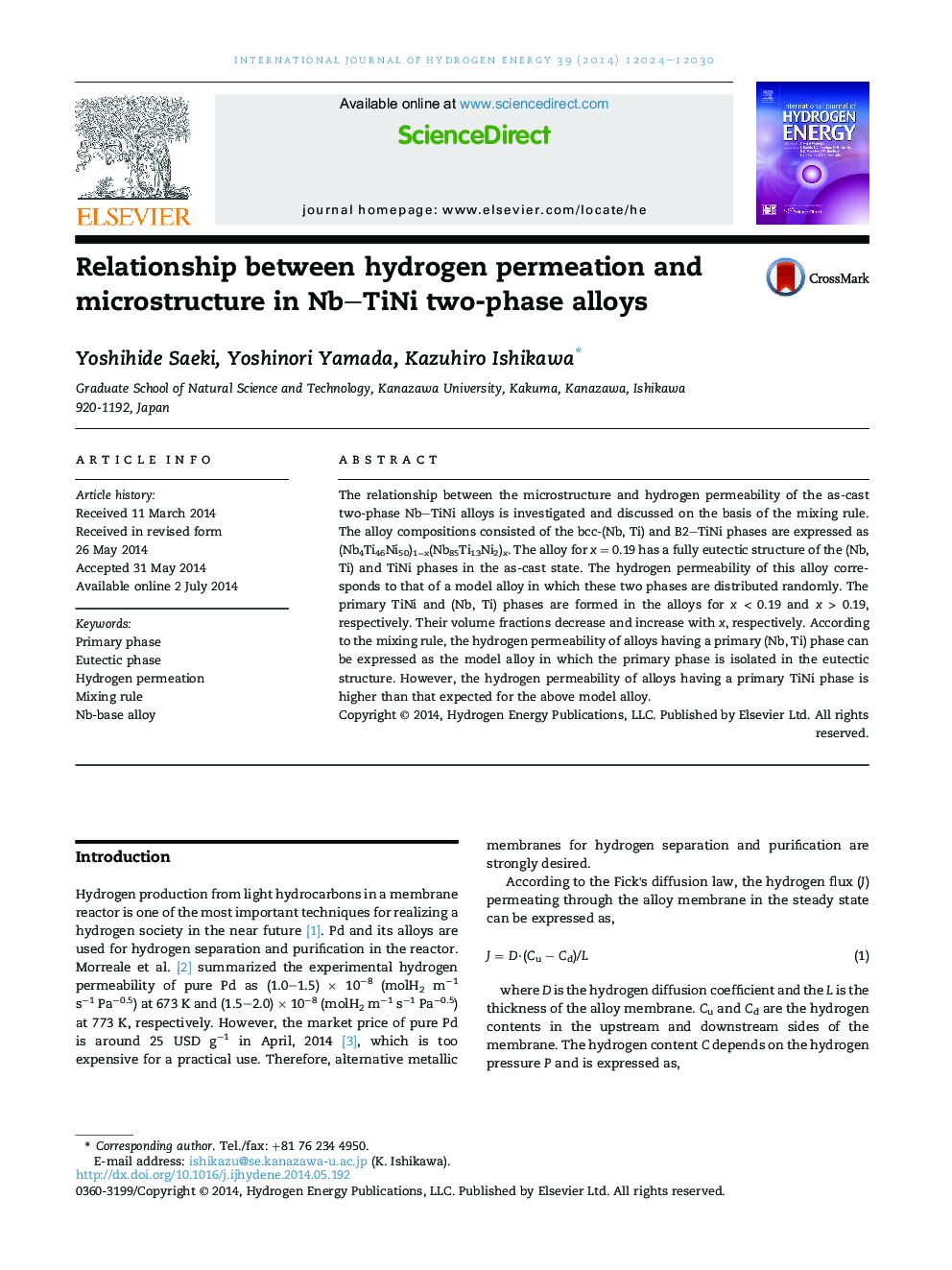| Article ID | Journal | Published Year | Pages | File Type |
|---|---|---|---|---|
| 1273001 | International Journal of Hydrogen Energy | 2014 | 7 Pages |
•Relationship between microstructure and permeability is theoretically analyzed.•Permeability of Nb–TiNi alloys increases with volume fraction of (Nb, Ti) phase.•Structure of eutectic phase corresponds to that of random distribution of two phases.•Eutectic alloy has higher permeability than that of granule two-phase alloy.•Permeability of primary + eutectic alloys is well described using the mixing rule.
The relationship between the microstructure and hydrogen permeability of the as-cast two-phase Nb–TiNi alloys is investigated and discussed on the basis of the mixing rule. The alloy compositions consisted of the bcc-(Nb, Ti) and B2–TiNi phases are expressed as (Nb4Ti46Ni50)1−x(Nb85Ti13Ni2)x. The alloy for x = 0.19 has a fully eutectic structure of the (Nb, Ti) and TiNi phases in the as-cast state. The hydrogen permeability of this alloy corresponds to that of a model alloy in which these two phases are distributed randomly. The primary TiNi and (Nb, Ti) phases are formed in the alloys for x < 0.19 and x > 0.19, respectively. Their volume fractions decrease and increase with x, respectively. According to the mixing rule, the hydrogen permeability of alloys having a primary (Nb, Ti) phase can be expressed as the model alloy in which the primary phase is isolated in the eutectic structure. However, the hydrogen permeability of alloys having a primary TiNi phase is higher than that expected for the above model alloy.
